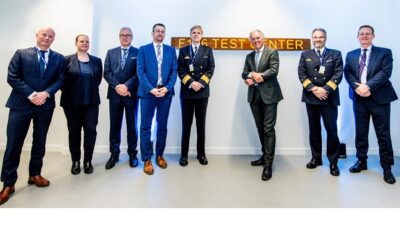Fundamental Multi-Role Concept May be Flawed
In its 31 March report on the F-35 programme, the US Congressional Research Service (CRS) expresses doubts about the whole joint approach to the development of fighter aircraft – referring to a 2013 RAND Corporation report that found that expected financial savings are illusory and that operational and strategic risks are introduced. CRS warns of implications for future programmes.
Tucked away at the end of the report is a paragraph reminding lawmakers that the Joint Strike Fighter effort, in the DoD’s words “was structured from the beginning to be a model of acquisition reform, with an emphasis on jointness, technology maturation and concept demonstrations, and early cost and performance trades integral to the weapon system requirements definition process.” A subsequent RAND report, CRS says, found the fundamental concept behind the F-35 programme – that of making one basic airframe serve multiple services’ requirements – may have been flawed.
The RAND report said that, historically, joint aircraft programmes on average experienced substantially higher cost growth in acquisition (research, development, test, evaluation, and procurement) than single-service programmes, and this cost growth is not offset by savings in acquisition, operations and support. RAND also said that under all plausible conditions analysed, the F-35’s estimated life-cycle cost was consistently higher than three notional equivalent single-service programmes.
Notional savings depend on maximising commonality between variants, but the difficulty in reconciling diverse requirements works against this. While the US government has an infinite money supply because it issues the dollar, the extra financial costs are associated with the use of limited real resources, such as time, human effort and materials, that could be better employed elsewhere.
RAND also pointed out that joint programmes harm the combat aircraft industrial base, reducing the number of prime contractors in the market and shrinking the scope for future competition, thereby discouraging innovation and making cost control more difficult.
Finally, RAND warned that joint programmes could increase operational and strategic risks to US forces. Operating a variety of fighter types, it said, provides a hedge against design flaws and maintenance and safety issues, which could potentially cause fleet-wide stand-downs and also increases the options available to meet unanticipated enemy capabilities.
In a follow-on report focused on the 6th-generation fighter effort published in 2014, RAND again warned against a joint approach. “Unless the participating services have identical, stable requirements, DoD should avoid future joint fighter and other complex joint aircraft programmes.”
CRS makes no particular recommendations, rather it invites Congress to consider how the pros and cons of joint programmes may have changed as a consequence of developments in technology, doctrine and tactics.
It seems to MON that there are still many advantages to commonality, but that there is more than one approach to realising them: sharing core technologies and subsystems might be more sensible than trying to shoehorn too many capabilities, some of them mutually antagonistic, into a single airframe.
Peter Donaldson in London for MON

























